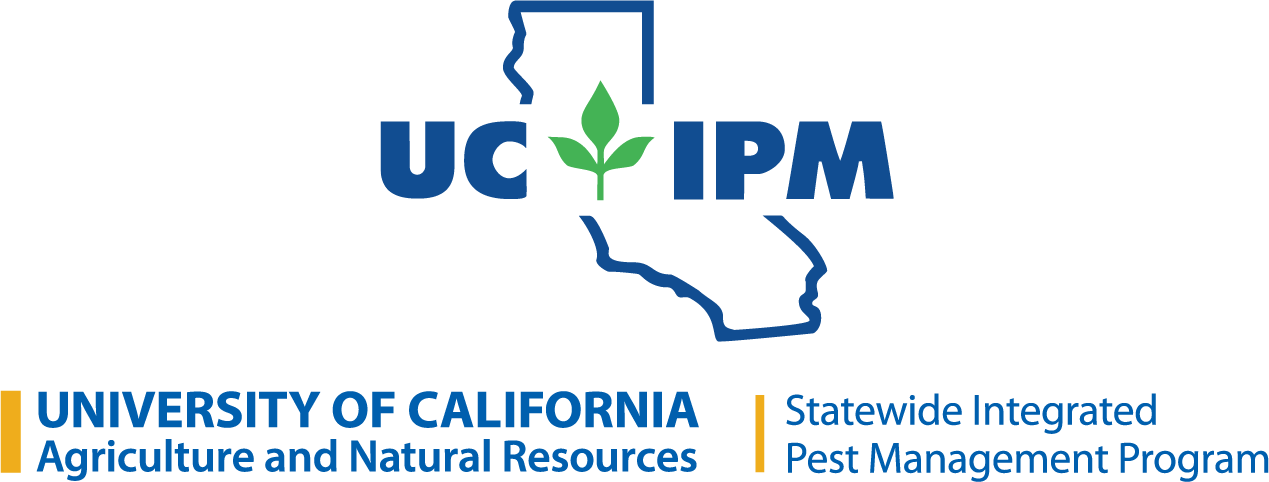White clover is a creeping perennial broadleaf plant. Except for deserts, it is found throughout California, to about 4900 feet (about 1500 m). White clover invades agricultural land and other disturbed sites.
Habitat
Agricultural crop fields, orchards, vineyards, forest clearings, mountain meadows, lawns and planting beds.
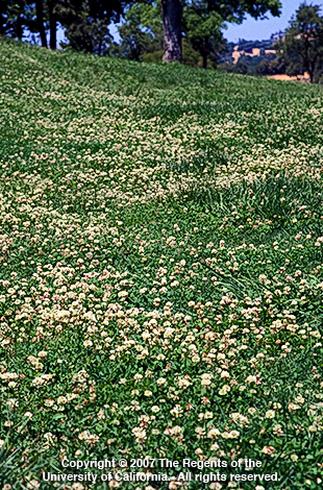
Seedling
Cotyledons (seed leaves) are small, hairless, oval to oblong, and stalked. Leaves are alternate to one another along the stem. The first leaf is simple, round to oval, often broader than long, and hairless or nearly so. True leaves consist of three leaflets.
Mature Plant
Branching stems grow between 4 to 12 inches (10–30 cm) long, creep along the ground, and root at stem joints (nodes) producing large clumps. Leaves alternate with one another along the stem and consist of three leaflets. Each leaflet is 1/4 to 1/2 of an inch (0.6–1.2 cm) long, nearly hairless and may have a whitish crescent in the center. Although strawberry clover, Trifolium fragiferum, is similar in appearance, it does not have the whitish crescent that is often found on white clover leaflets.
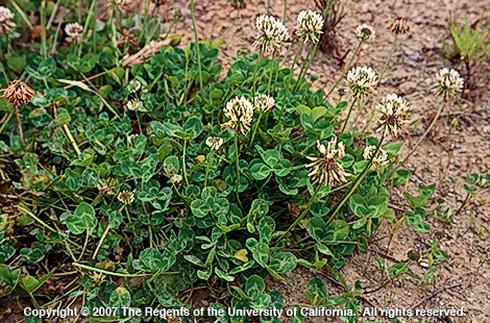
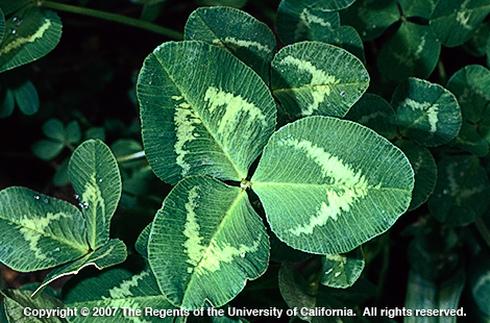
Flowers
White clover blooms from March through December. Tiny, white to pale pink flowers cluster into spherical to slightly egg-shaped flower heads.
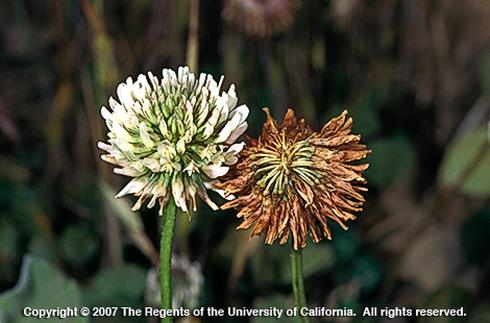
Fruits
The fruiting heads are brown and hairless and comprised of tiny linear pods.
Seeds
The seeds are tiny, somewhat triangular to egg shaped, and have a shallow notch at one end. They are slightly compressed and yellow to orange brown.
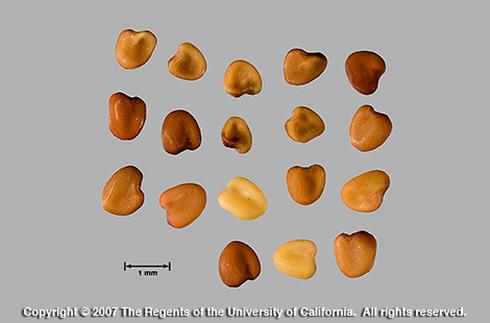
Reproduction
Reproduces by seed.
